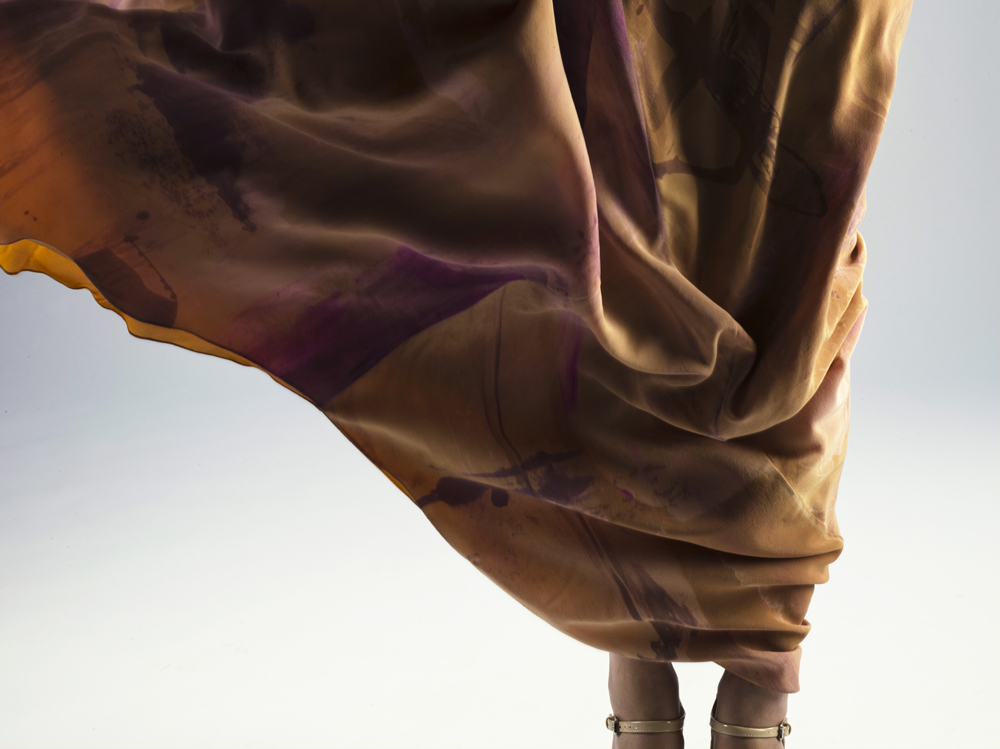Kingston University isn’t as well known for Fashion as Central St Martins but their skill set is equally impressive.
Characteristically Kingston students use modern, tailored shapes with a commercial edge. Marie Cunliffe’s brand M.L.E is a sharp contrast to this rule, with flowing draped shapes of giant sheaths of fabric which, although wearable, have many of the characteristics of haute couture. On closer inspection her choice of fabric is also particularly unusual, she is using a unique metal weave material developed by PhD textile designer, Lynn Tandler, which has never been used in fashion before. Cunliffe’s mission was to take classical shapes and reinterpret them in a way that is entirely new. Through using Tandler’s fabric, she could really take this as far as possible by essentially sculpting her designs with her own hands.


The collection was born from Cunliffe’s research into aerial imagery of the earth. She was particularly taken by the work of J. Henry Fair whose depictions of the destruction of the earth have the bitter-sweet irony of being eye wateringly beautiful. This gives an alternative perspective on our environment and she wanted to translate this into the contradiction of draped shapes with structural, heavy weight textiles, which make up her designs. She also feeds this notion into the screen print she has designed using aerial photographs, and the copper foil she has added to lace by Sophie Hallette. Tandler’s metal was a natural extension of this concept as it is quite literally a product of the ‘Industrial Scars’ documented by Fair in his photographs. Tandler came up with the idea for her metal fabric in her brother’s forge, so the traditional craft of weaving is interlocked with blacksmithing.

 Not that it has all been smooth sailing for Cunliffe. The size of her patterns was problematic as they are so big some of them were larger than the pattern-cutting table itself, which shows how uncompromising her vision is. She also had to develop new ways of using the metal materials so that they wouldn’t rip the linings of the clothes or scratch the wearer. Her solution was iron on tape used for wetsuits, which seals seams under heat; a futuristic finish for some timeless garments. Finally there were many points where she was afraid the fabric would not respond as well to the shapes of the designs as softer materials might, but this is the sort of risk taking which makes for innovative creations. In the end these obstacles undoubtedly paid off, the fabric giving her clothes the accentuated movement she was hoping for, manipulating light in a watery and unpredictable way, and giving her to opportunity to create a collection, which treads the line between fashion and sculpture.
Not that it has all been smooth sailing for Cunliffe. The size of her patterns was problematic as they are so big some of them were larger than the pattern-cutting table itself, which shows how uncompromising her vision is. She also had to develop new ways of using the metal materials so that they wouldn’t rip the linings of the clothes or scratch the wearer. Her solution was iron on tape used for wetsuits, which seals seams under heat; a futuristic finish for some timeless garments. Finally there were many points where she was afraid the fabric would not respond as well to the shapes of the designs as softer materials might, but this is the sort of risk taking which makes for innovative creations. In the end these obstacles undoubtedly paid off, the fabric giving her clothes the accentuated movement she was hoping for, manipulating light in a watery and unpredictable way, and giving her to opportunity to create a collection, which treads the line between fashion and sculpture.



